Joel Schuman
Uncertainty guided semi-supervised segmentation of retinal layers in OCT images
Mar 02, 2021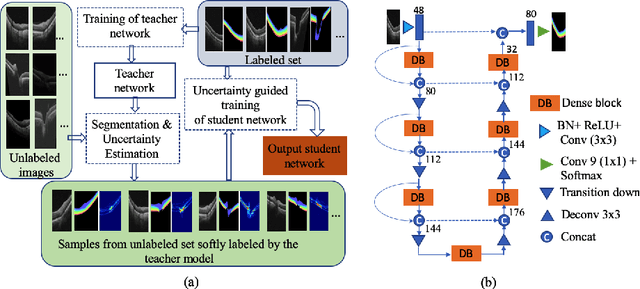

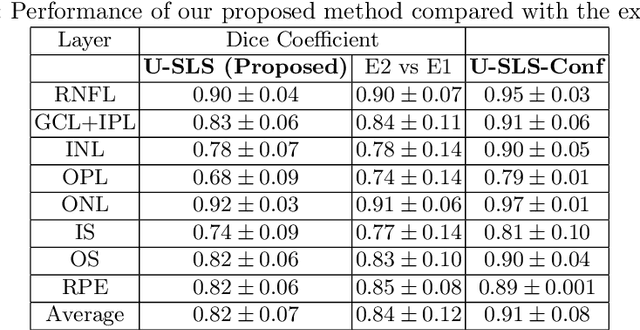
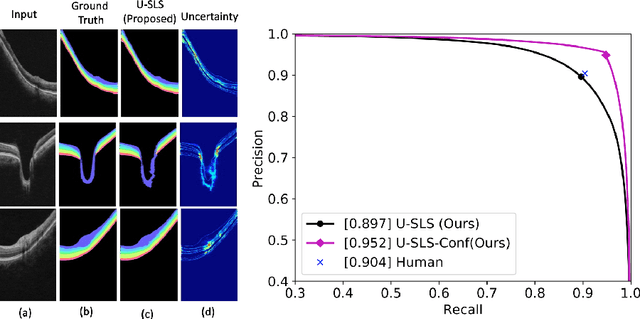
Abstract:Deep convolutional neural networks have shown outstanding performance in medical image segmentation tasks. The usual problem when training supervised deep learning methods is the lack of labeled data which is time-consuming and costly to obtain. In this paper, we propose a novel uncertainty-guided semi-supervised learning based on a student-teacher approach for training the segmentation network using limited labeled samples and a large number of unlabeled images. First, a teacher segmentation model is trained from the labeled samples using Bayesian deep learning. The trained model is used to generate soft segmentation labels and uncertainty maps for the unlabeled set. The student model is then updated using the softly segmented samples and the corresponding pixel-wise confidence of the segmentation quality estimated from the uncertainty of the teacher model using a newly designed loss function. Experimental results on a retinal layer segmentation task show that the proposed method improves the segmentation performance in comparison to the fully supervised approach and is on par with the expert annotator. The proposed semi-supervised segmentation framework is a key contribution and applicable for biomedical image segmentation across various imaging modalities where access to annotated medical images is challenging
* MICCAI,19
Self-supervised Denoising via Diffeomorphic Template Estimation: Application to Optical Coherence Tomography
Aug 18, 2020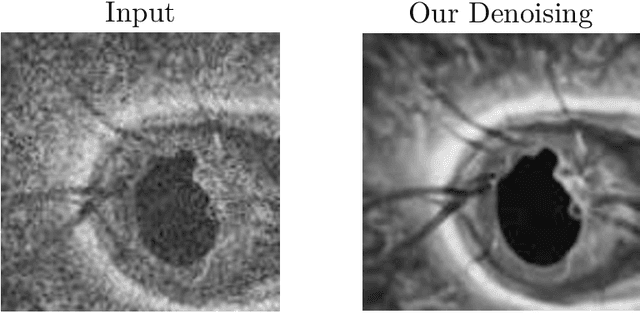

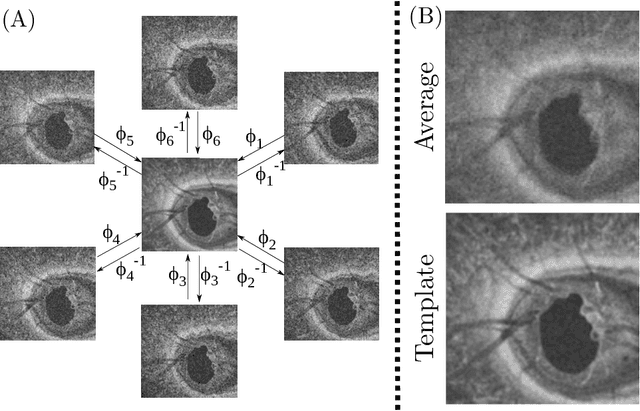
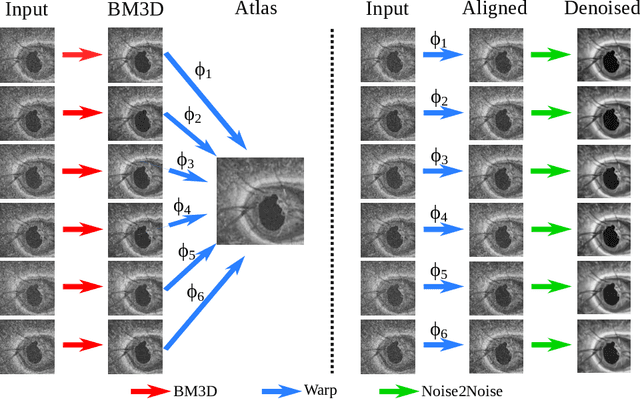
Abstract:Optical Coherence Tomography (OCT) is pervasive in both the research and clinical practice of Ophthalmology. However, OCT images are strongly corrupted by noise, limiting their interpretation. Current OCT denoisers leverage assumptions on noise distributions or generate targets for training deep supervised denoisers via averaging of repeat acquisitions. However, recent self-supervised advances allow the training of deep denoising networks using only repeat acquisitions without clean targets as ground truth, reducing the burden of supervised learning. Despite the clear advantages of self-supervised methods, their use is precluded as OCT shows strong structural deformations even between sequential scans of the same subject due to involuntary eye motion. Further, direct nonlinear alignment of repeats induces correlation of the noise between images. In this paper, we propose a joint diffeomorphic template estimation and denoising framework which enables the use of self-supervised denoising for motion deformed repeat acquisitions, without empirically registering their noise realizations. Strong qualitative and quantitative improvements are achieved in denoising OCT images, with generic utility in any imaging modality amenable to multiple exposures.
Inference of visual field test performance from OCT volumes using deep learning
Aug 26, 2019

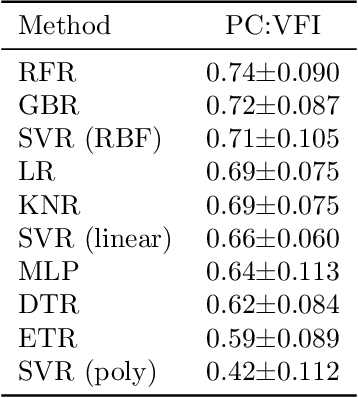

Abstract:Visual field tests (VFT) are pivotal for glaucoma diagnosis and conducted regularly to monitor disease progression. Here we address the question to what degree aggregate VFT measurements such as Visual Field Index (VFI) and Mean Deviation (MD) can be inferred from Optical Coherence Tomography (OCT) scans of the Optic Nerve Head (ONH) or the macula. Accurate inference of VFT measurements from OCT could reduce examination time and cost. We propose a novel 3D Convolutional Neural Network (CNN) for this task and compare its accuracy with classical machine learning (ML) algorithms trained on common, segmentation-based OCT, features employed for glaucoma diagnostics. Peak accuracies were achieved on ONH scans when inferring VFI with a Pearson Correlation (PC) of 0.88$\pm$0.035 for the CNN and a significantly lower (p $<$ 0.01) PC of 0.74$\pm$0.090 for the best performing, classical ML algorithm - a Random Forest regressor. Estimation of MD was equally accurate with a PC of 0.88$\pm$0.023 on ONH scans for the CNN.
 Add to Chrome
Add to Chrome Add to Firefox
Add to Firefox Add to Edge
Add to Edge